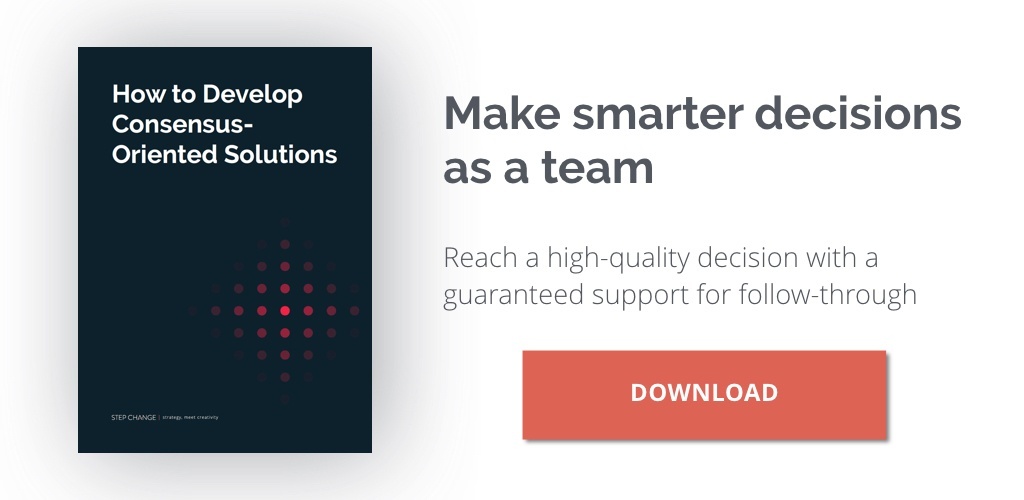We've all been there. Too many options and no clear way of reaching a resolution that's unbiased and accurate. Often in teams, conflicts arise where we're trying to find a resolution to a problem and several viable solutions pop up. The problem? Differing views and little to no congruency between them.
Our solution? The decision matrix
Designed to help alleviate the tension of choice, the decision matrix helps you evaluate and prioritise options. It’s a powerful and systematic tool for business owners, leaders, and teams.
6 Simple Steps in Using the Decision Matrix
Let’s break it down with a hypothetical example.
Your company is hiring a new project manager. And out of the seven applicants, three hopefuls passed the preliminary exams and will proceed to the panel interview. Let’s name them Persons A, B, and C. How do you go about the decision-making process?
1. Create a criteria to assess the qualities you need for the position and assign a relative weight to each criterion. Here’s an example:
2. Draw an L-shaped matrix. Write each criterion and their weights as row headings. Write the list of options as column headings — or vice versa.  3. Work your way down the columns, scoring each applicant for every factor. You can score each person from 0 (poor) to 5 (very good).
3. Work your way down the columns, scoring each applicant for every factor. You can score each person from 0 (poor) to 5 (very good).
4. Now establish a rating scale for each criterion. Choose one of the following options:
· 1, 2, 3 (1 = slight extent, 2 = some extent, 3 = great extent)
· 1, 2, 3 (1 = low, 2 = medium, 3 = high)
· 1, 2, 3, 4, 5 (1 = little, 5 = great)
· 1, 4, 9 (1 = low, 4 = moderate, 9 = high)
In this example, let’s use the fourth rating scale.
Note: It’s okay not to be able to use all the numbers in the scale. In this instance, since all the factors are important, the score 1 was not used.
 5. Multiply each of the scores by the values of the factors.
5. Multiply each of the scores by the values of the factors. 6. Finally, add up the weighted scores. The person with the highest score gets hired.
6. Finally, add up the weighted scores. The person with the highest score gets hired.
As a final tip: if your intuition tells you that Person C, even with the highest score, isn't the best option, perhaps the factors you used aren't as important to you as you thought. In that instance, go over the list of options and add or remove criterias as you see fit.
The Benefits of Using the Decision Matrix
You will arrive at a more logical (rather than emotional) decision that fits your team's priorities and goals. This will enhance your team's decision-making process and teamwork abilities.
Do you have a business problem coming up that you're desperate to solve? It's time to get your team members together in a meeting room and use this tool to weigh all your options.














